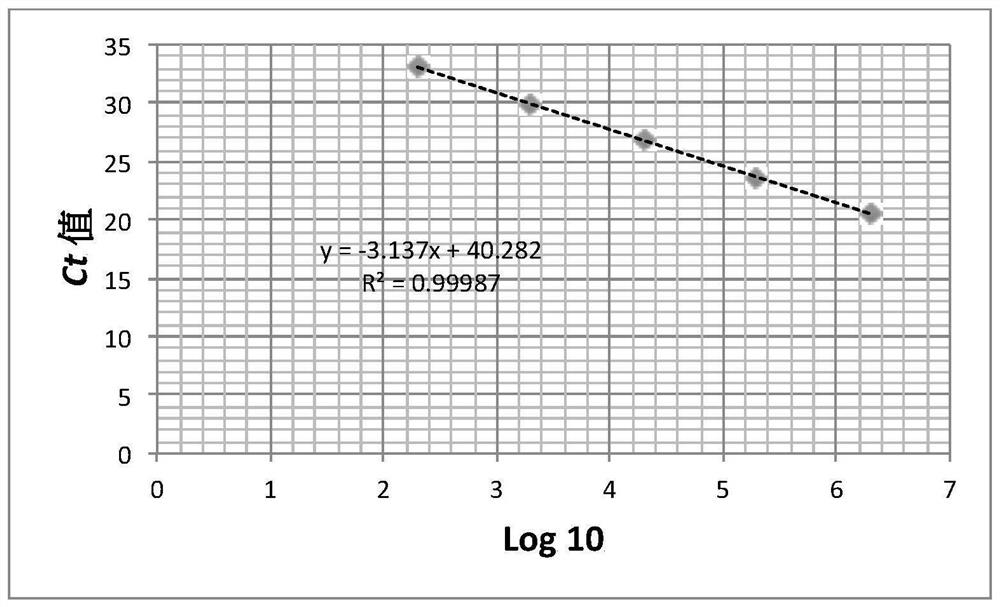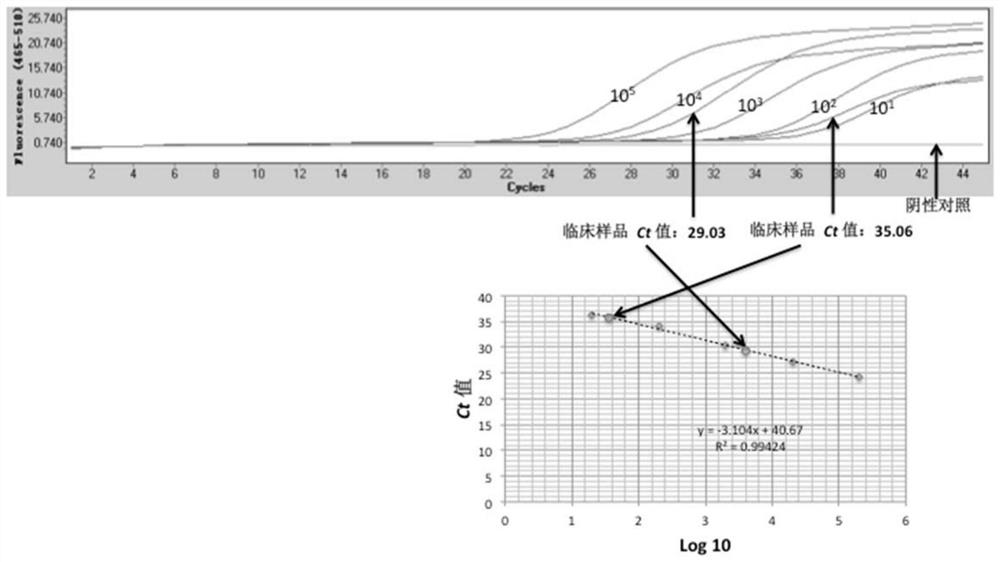Real-time quantitative PCR detection kit for herpes simplex virus type 1
A technology of herpes simplex virus and detection kit, which is applied in the determination/testing of microorganisms, DNA/RNA fragments, biochemical equipment and methods, etc., and can solve the problems of low diagnostic value of clinical etiology, high false positive/false negative, and positive Low detection rate and other issues, to achieve good clinical application value, strong specificity, and high sensitivity
- Summary
- Abstract
- Description
- Claims
- Application Information
AI Technical Summary
Problems solved by technology
Method used
Image
Examples
Embodiment example 1
[0042] Implementation Case 1. Preferred HSV1-specific Primers and Probes
[0043] The design of primers and probes is based on the NCBI genome database, using MegAlign, Primer and other software to select HSV1 conserved and specific sequences. Since the HSV1 DNA sequence has high homology with other herpesviruses (HSV2, CMV, EBV, VZV, HHV6, HHV7, HHV8) that infects humans, and human genome DNA is unavoidable when extracting HSV1 DNA, when designing primers, the primers There are at least 6 base mismatches with other herpes-like viruses and human genome sequences, and at least 3 base mismatches at the 3' end.
[0044] The probe adopts TAGMAN probe, the 5' end is marked with a fluorescent reporter group of 6FAM, and the 3' end is marked with a fluorescent quencher group of BHQ1. The annealing temperature of the probe is about 10°C higher than the annealing temperature of the primer to ensure that the probe preferentially binds to the template. The probe is close to the upstrea...
Embodiment example 2
[0047] Implementation case 2. Standard preparation of recombinant plasmid of HSV1 target gene
[0048] 1) According to the selected primers, the target gene sequence of HSV1 was downloaded from NCBI, and the PCR amplification sequence was synthesized by the company (Thermo Fisher), and the recombinant plasmid (pUC57-T vector) of the synthetic product was constructed to transform E. coli DH5α.
[0049] 2) Plasmid amplification and extraction:
[0050] (1) Inoculate 10 μL of Escherichia coli in solid LB medium containing ampicillin, culture upside down, and overnight at 37°C;
[0051] (2) Pick a single colony and inoculate it in 5ml liquid LB medium, and culture it on a horizontal shaker at 37°C, 200rpm, for 12-16h;
[0052] (3) Take the cultured bacterial solution by shaking, centrifuge at 5000g for 5 minutes, discard the supernatant; add 2ml Buffer P1, shake or pump, and mix well until no cell clumps gather;
[0053] (4) Add 2ml Buffer P2, mix by inverting slightly, incubate...
Embodiment example 3
[0069] Implementation case 3. HSV1 qRT-PCR detection kit
[0070] The components of the qRT-PCR kit are shown in Table 3.
[0071] Table 3. HSV1 qRT-PCR detection kit components
[0072]
[0073]*The positive control of the UL40 recombinant plasmid with 5 concentration gradients of known copy number can be used to make a standard curve using the method of Example 2, and the viral load of the nucleic acid sample can be calculated.
[0074] The reaction system of the kit is shown in Table 4.
[0075] Table 4. qRT-PCR reaction system
[0076] 2×PCR Mix 10μL upstream primer 0.2 μL downstream primer 0.2 μL probe 0.2 μL Tear fluid nucleic acid sample / positive control / negative control 2μL RNase-free water 7.4μL total 20 μL
PUM
 Login to View More
Login to View More Abstract
Description
Claims
Application Information
 Login to View More
Login to View More - R&D
- Intellectual Property
- Life Sciences
- Materials
- Tech Scout
- Unparalleled Data Quality
- Higher Quality Content
- 60% Fewer Hallucinations
Browse by: Latest US Patents, China's latest patents, Technical Efficacy Thesaurus, Application Domain, Technology Topic, Popular Technical Reports.
© 2025 PatSnap. All rights reserved.Legal|Privacy policy|Modern Slavery Act Transparency Statement|Sitemap|About US| Contact US: help@patsnap.com



